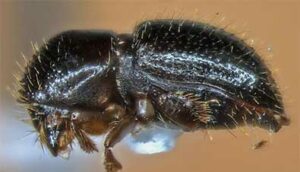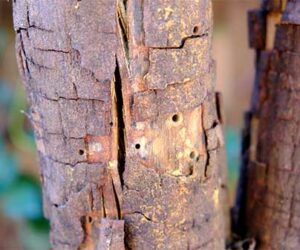Read the latest information on
Foot-and-mouth disease
Nursery, fruit, nut and forestry industries in Western Australia should be on the lookout for the exotic pest, polyphagous shot-hole borer (Euwallacea fornicates) after a recent detection in Fremantle, Perth in August 2021.
Polyphagous shot-hole borer is a tiny beetle that bores into living trees which can result in tree death. At this stage, detections have only been found in six different species of urban amenity trees such as box elder maple and mango, however, if the borer spreads beyond these, it could have significant economic and environmental impacts.

Euwallacea fornicates, Image courtesy Javier E. Mercado, Bark Beetle Genera of the U.S., USDA APHIS PPQ, Bugwood.org
A Quarantine Area is in place around Freemantle and the surrounding local government areas to prevent the spread and enable urgent surveillance activities to be undertaken.
In early November there were 15 confirmed infested premises and four premises with suspect detections, with several of the suspect detections located outside of the Quarantine Area.
About polyphagous shot-hole borer
Polyphagous shot-hole borer is native to Southeast Asia and considered both an agricultural and environmental pest with more than 400 host tree species. The borer also has a symbiotic relationship with a Fusarium fungus which causes damage and dieback in susceptible trees.
The borer is most likely to be seen in Spring and Autumn, as it moves to new trees. Adult female borers tunnel into trees and spread through the movement of infested trees, firewood and green waste material.
The borer cannot breed and multiply in all these hosts so impacts will differ between host species.
What to look for
The adult beetles and larvae can be hard to spot as they spend most of their lives inside a tree. Look for the symptoms in potential host trees which include:

Entry holes into tree trunks or branches caused by polyphagous shot-hole borer
The importance of reporting
Surveillance will continue to monitor for the pest in Fremantle and surrounding areas.
Residents in and around affected areas should check their trees for signs of borer damage and wilting. If you suspect borer damage, report it to DPIRD through their MyPestGuide® Reporter app or call the Exotic Plant Pest Hotline on 1800 084 881.
For the latest information on Polyphagous shot-hole borer and the Quarantine Area requirements in Western Australia visit https://www.agric.wa.gov.au/borer.